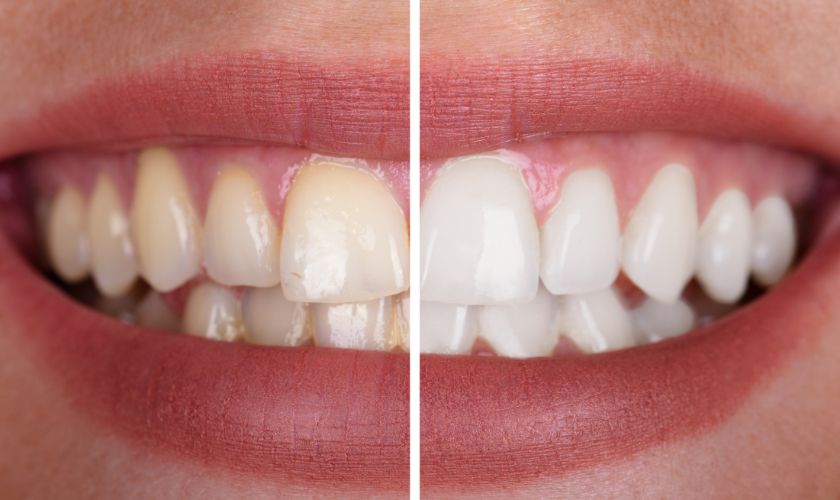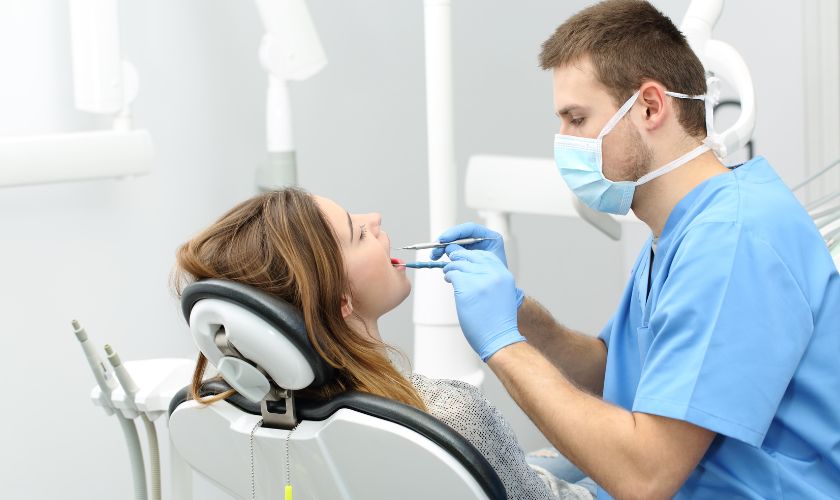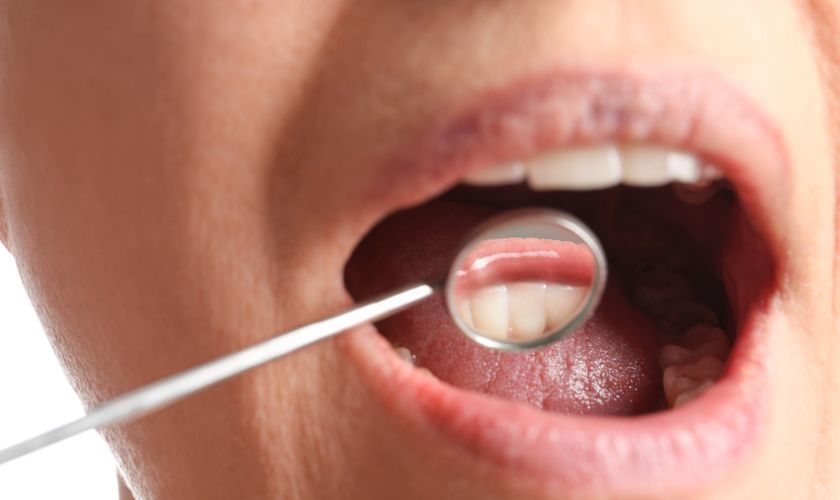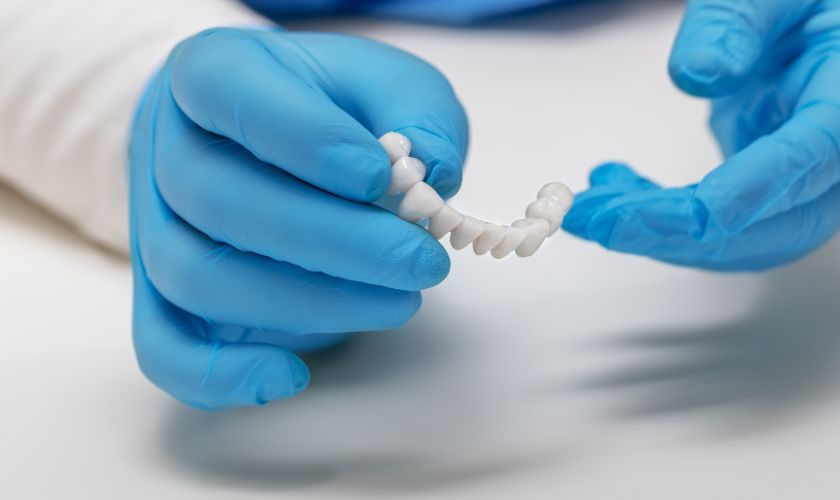
Your Complete Guide to Teeth Whitening Techniques and Options
January 5, 2024
Teeth Whitening
Are you tired of hiding your smile because of yellow or stained teeth? Well, worry no more! In this blog post, we will take you on a journey towards achieving that dazzling white smile you’ve always dreamed of. We’ll explore the various causes of tooth discoloration, as well as the different at-home and professional teeth whitening solutions available. Whether you prefer a DIY approach or want to leave it in the hands of the experts, we’ve got all the information you need right here. So sit back, relax, and get ready to say goodbye to those pesky stains – hello confidence!
Understanding the Importance of White Teeth
Having white teeth is more than just a cosmetic preference – it plays a significant role in our overall appearance and self-confidence. When we have discolored or stained teeth, it can make us feel self-conscious and hesitant to smile freely. On the other hand, having a bright white smile can boost our confidence levels and improve our interactions with others.
White teeth also convey good oral hygiene practices. It shows that we take care of our teeth and prioritize their health. A healthy smile not only looks great but also indicates that we are taking steps to prevent dental issues such as cavities or gum disease.
Common Causes of Tooth Discoloration
Our teeth play a crucial role in our overall appearance. They not only help us chew and speak, but also contribute to our smile. However, over time, various factors can lead to tooth discoloration or staining. Let’s take a closer look at some common causes.
One of the primary culprits behind tooth discoloration is food and drinks we consume on a daily basis. Coffee, tea, red wine, and certain fruits like berries are notorious for leaving stains on our teeth. Smoking tobacco products is another major cause of yellowing or darkening teeth.
Poor oral hygiene practices can also result in tooth discoloration. When we don’t brush and floss regularly, plaque buildup occurs, which can eventually lead to stains on the enamel surface.
Certain medications such as antibiotics (tetracycline), antihistamines (Benadryl), and high blood pressure drugs (antihypertensives) may cause teeth to become discolored over time.
At-Home Teeth Whitening Options:
1. Whitening Toothpaste:
One of the easiest and most accessible ways to whiten your teeth at home is by using whitening toothpaste. These toothpastes contain special ingredients that help remove surface stains and restore the natural whiteness of your teeth. Simply replace your regular toothpaste with a whitening variant, brush as usual, and see gradual results over time.
2. Whitening Strips:
Another popular option for at-home teeth whitening is using whitening strips. These thin, flexible strips are coated with a peroxide-based gel and are applied directly to the teeth for a specified period of time each day. The gel works to lighten any discoloration on your teeth, giving you noticeable results within a few weeks.
3. Whitening Trays:
For a more customized approach, consider using whitening trays. These trays are filled with a bleaching gel that can be worn overnight or for shorter periods during the day. The trays ensure even distribution of the gel onto all surfaces of your teeth, providing consistent and effective whitening.
A. Whitening Toothpaste
When it comes to at-home teeth whitening options, one of the most commonly used products is whitening toothpaste. This type of toothpaste contains special ingredients that help remove surface stains and lighten the color of your teeth over time.
Whitening toothpaste works by using abrasive particles or chemicals that effectively scrub away stains on the enamel. These particles are usually made from substances like silica, calcium carbonate, or baking soda. They gently polish the teeth and remove surface discoloration caused by factors such as coffee, tea, tobacco use, or certain foods.
It’s important to note that while whitening toothpaste can be effective in removing some surface stains and brightening your smile, it may not produce dramatic results for deeper discoloration. Additionally, whitening toothpaste should be used in conjunction with regular brushing and flossing for optimal oral hygiene.
To get the best results with whitening toothpaste:
1. Choose a reputable brand: Look for a product that has been tested and approved by dental professionals.
2. Follow instructions carefully: Use the toothpaste as directed and avoid excessive brushing which can damage enamel.
3. Be patient: Results may take several weeks to become noticeable.
B. Whitening Strips
Whitening strips have become a popular choice for those looking to brighten their smile at home. These thin, flexible strips are coated with a peroxide-based gel that helps remove surface stains from your teeth.
Using whitening strips is relatively simple. Just apply the strip to your teeth and leave it on for the recommended amount of time, usually around 30 minutes. The gel works by penetrating the enamel and breaking up the stains, revealing whiter teeth underneath.
One of the advantages of using whitening strips is their convenience. You can easily incorporate them into your daily routine without any hassle or mess. Plus, they are discreet and virtually invisible when applied properly.
However, it’s important to note that whitening strips may not be suitable for everyone. If you have sensitive teeth or gum disease, it’s best to consult with your dentist before using them. Additionally, results may vary depending on the severity of discoloration and individual factors such as diet and oral hygiene habits.
Whitening strips offer a convenient way to achieve a brighter smile in the comfort of your own home. While they may not provide dramatic results like professional treatments do, they can help improve the appearance of stained teeth over time with consistent use.
C. Whitening Trays
Whitening trays are another popular option for at-home teeth whitening. These trays are custom-made to fit your teeth and usually come with a bleaching gel that you apply to the tray before wearing it.
Using whitening trays is quite simple. You fill the tray with a small amount of the bleaching gel and then place it over your teeth, making sure all surfaces are covered. The tray is typically worn for several hours each day or overnight, depending on the instructions provided.
One advantage of using whitening trays is that they can provide more consistent and even coverage compared to other at-home methods like toothpaste or strips. The custom-fit nature of the trays ensures that every tooth receives equal exposure to the bleaching agent, resulting in a more uniform whitening effect.
Professional Teeth Whitening Techniques:
When it comes to achieving a dazzling white smile, professional teeth whitening techniques can provide remarkable results. These methods are typically carried out by dental professionals who have the expertise and tools to effectively brighten your teeth.
One of the most popular professional teeth whitening techniques is in-office treatments. During this procedure, a dental expert will apply a powerful bleaching agent directly onto your teeth. The solution is activated using specialized light or laser technology, which helps break down stubborn stains and discoloration.
Another option for professional teeth whitening is take-home kits provided by dentists. These kits consist of custom-made trays that fit perfectly over your teeth. You’ll be given a prescription-strength bleaching gel to apply into the trays, which you wear at home for a specified period of time each day.
The advantage of professional teeth whitening techniques is their ability to deliver faster and more dramatic results compared to at-home options. Additionally, these methods are supervised by dental professionals who can ensure safety and personalized treatment.
A. In-Office Treatments
If you’re looking for quick and dramatic results, in-office teeth whitening treatments may be the perfect option for you. These professional treatments are performed by dentists or dental hygienists, ensuring that they are done safely and effectively.
During an in-office treatment, a strong bleaching agent is applied to your teeth. This agent is usually activated by a special light or laser to enhance the whitening process. The entire procedure typically takes about an hour, making it convenient for those with busy schedules.
One of the main advantages of in-office treatments is their ability to remove deep stains and discoloration that at-home options may not be able to tackle. Additionally, because these treatments are administered by professionals, they can ensure that your gums and mouth are protected during the process.
B. Take-Home Kits from Dentist
Take-home teeth whitening kits provided by dentists are a popular option for those looking to brighten their smiles in the comfort of their own homes. These kits typically consist of custom-fitted trays and professional-grade bleaching gel.
One of the advantages of these take-home kits is that they offer more control over the whitening process. The custom-fitted trays ensure that the bleaching gel evenly covers all your teeth, leading to more consistent results. Plus, you can choose when and where to use them – whether it’s during your nightly routine or while binge-watching your favorite show.
Using a take-home kit from a dentist also means you have access to stronger bleaching agents than what’s available over-the-counter. This allows for more effective stain removal and greater overall whitening power.
To get started with a take-home kit, simply make an appointment with your dentist. They will create impressions of your teeth to fabricate customized trays that fit perfectly in your mouth. Your dentist will provide specific instructions on how long to wear the trays each day and how many days or weeks treatment should last.
Natural Remedies for Whiter Teeth:
Many people are turning to natural remedies as an alternative to chemical-based teeth whitening options. These remedies not only provide a more holistic approach but also offer the added benefit of being easily accessible and affordable.
One popular natural remedy is oil pulling, which involves swishing a tablespoon of oil (such as coconut or sesame) in your mouth for 15-20 minutes. This process helps remove plaque and bacteria, resulting in whiter teeth over time.
Another option is baking soda, known for its mild abrasive properties that can help remove surface stains. Simply mix a small amount with water to form a paste and gently brush your teeth with it once or twice a week.
Strawberries are also touted as a natural teeth whitener due to their high levels of malic acid, which can help break down stains on the enamel. You can mash up strawberries and apply the mixture directly onto your teeth or use them in conjunction with baking soda for added effectiveness.
A. Oil Pulling
As you can see, there are numerous teeth whitening techniques and options available to help you achieve a brighter smile. From at-home remedies to professional treatments, the choice ultimately depends on your preferences and budget. One natural remedy that has gained popularity in recent years is oil pulling.
Oil pulling involves swishing oil, typically coconut or sesame oil, in your mouth for several minutes each day. Advocates of this method claim that it helps remove bacteria and toxins from the teeth and gums, leading to a whiter smile. While scientific research on its effectiveness is limited, many people have reported positive results.
Remember that while these natural remedies may provide some improvement in tooth color, they may not be as effective as professional treatments or over-the-counter products specifically designed for teeth whitening.
Recent Posts

Top 5 Tips for Choosing the Right Pediatric Dentist

Dental Emergencies: Don’t Suffer in Silence, Get Fast Relief

Oral Cancer: Know the Signs and Symptoms for Early Detection

Understanding the Role of Dental Crowns in Oral Health


